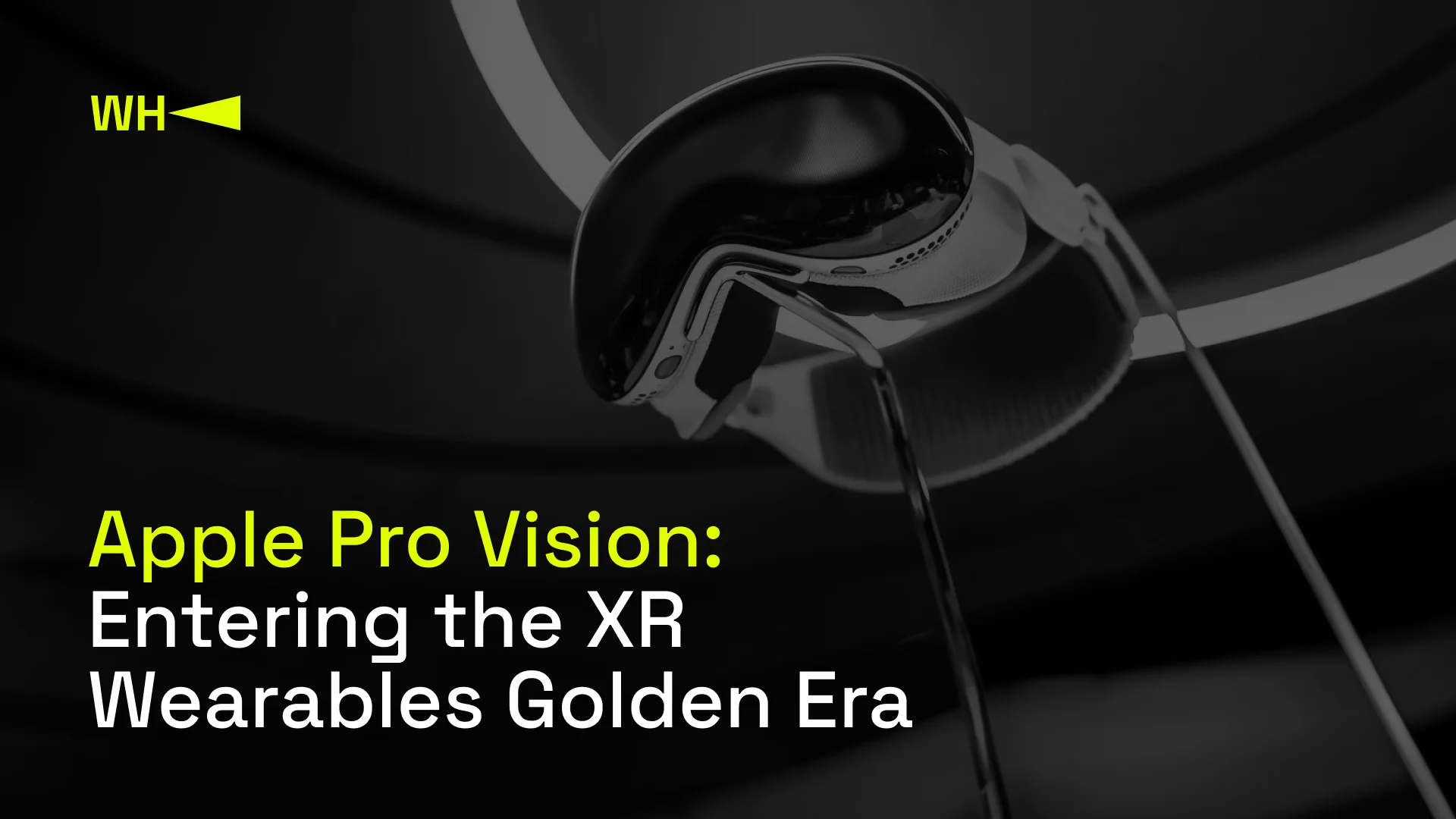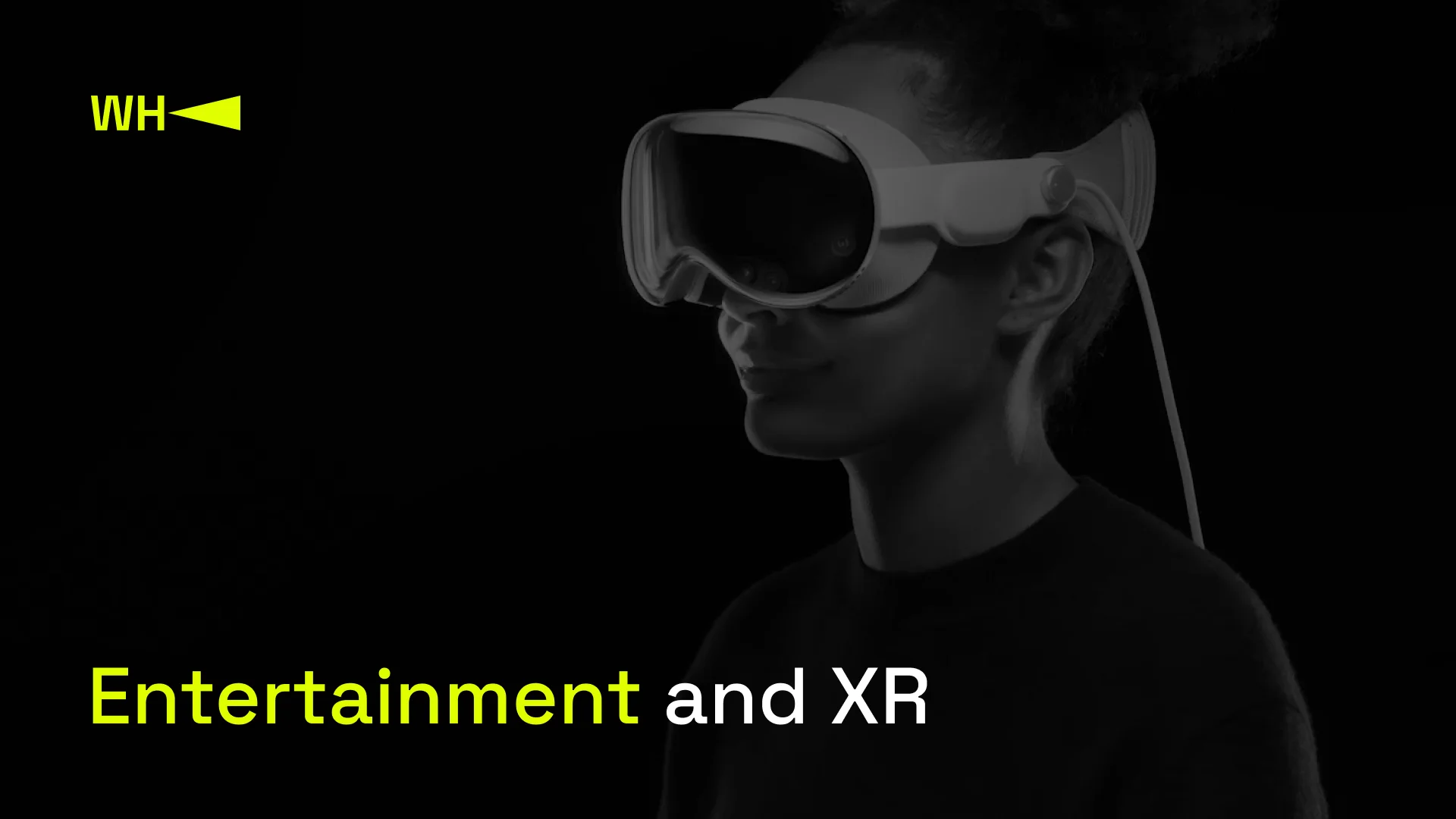April 16, 2024
Apple Pro Vision: Entering the XR Wearables Golden Era

3 min read
If you check your socials at least once every couple of days, you couldn’t help but notice Apple’s release of a new XR wearable device. The brand-new Apple Vision Pro was rewarded with a splurge of fan enthusiasm. Ideas for using the device in the owners’ daily routines have started popping up, while brands are throwing their thoughts around and thinking of new apps to improve user experience in general.
However, if we look at the general picture, does the release of Apple Pro Vision really affect the XR sphere? Will other industries, such as entertainment, change due to the emergence of new XR devices?
Apple Pro Vision: not the first XR wearable, but a pioneer
XR is a fairly old concept, and inventors have been looking for ways to seamlessly integrate it into the everyday all this time. The first AR devices, particularly head-mounted devices (HMDs), began to appear in the second half of the 20th century. The Sword of Damocles or Philco headsets looked funny back then, but they served the idea of bringing near-real experience to users regardless of environment. In contrast, new devices such as Google Glass, Meta Quest, and finally, Apple Pro Vision mix realities, providing users with a virtual world and elements that fit right into the current times.
Apple Pro Vision isn’t the cheapest or the lightest, but it has revolutionized the world of XR devices. Apple’s headset delivers real-time renders that are closest to people’s vision, at least in comparison with other XR devices. Apple Pro Vision offers a higher resolution, a multitasking approach, and quality 3D models. Simply put, this device is suitable for both work and leisure.
Entertainment and XR
Some creative specialists are developing app concepts based on Apple Pro Vision, like apps for music lessons, games, and even sports watching. For example, John LePore showed how the Formula One app would look like if one added a little XR technology. It looks revolutionary, but what’s more interesting is that developers can actually implement this idea because all the technologies for this already exist.
Apple Vision Pro
— John LePore (@JohnnyMotion) January 22, 2024
+ Formula 1
= Killer App (?)
a story about:
-design & innovation
-racing royalty
-property theft
and more! pic.twitter.com/6MbLKEDqOB
While the cases of using XR wearables are not that many for now, it’s a game-changer that alters traditional ways of watching and enjoying movies. Such giants as Disney have moved beyond just the concept and offer their fans a complete immersion in their favorite stories together with Apple Vision Pro.
The future of XR
Even though the Apple headset is trendy, it’s only the first step towards the XR device of the future, and some issues still need to be fixed. The device’s weight and the time it can run without charging greatly influence people’s decision to use the XR HMD on an ongoing basis. However, there are enough reasons to believe that this will change in the future.
“In order for XR wearables to become as ubiquitous as the smartphone, there are many extremely technical challenges that need to be overcome in miniaturization, optics, and battery tech to produce a device that’s closer to unobtrusive spectacles that we’ll wear comfortably as we go about our day and move about the world,” shares Ron Padzensky, CEO of Nvzn.
The world is shifting toward the golden era of XR. Gaming, entertainment, and even healthcare and education have hands-on cases of implementing this technology. XR can bring tangible value to people, advancing the way they work, communicate, manage tasks, and play. So, we can confidently assume that XR devices will only become more popular in the future, which means their capabilities will improve, too.
